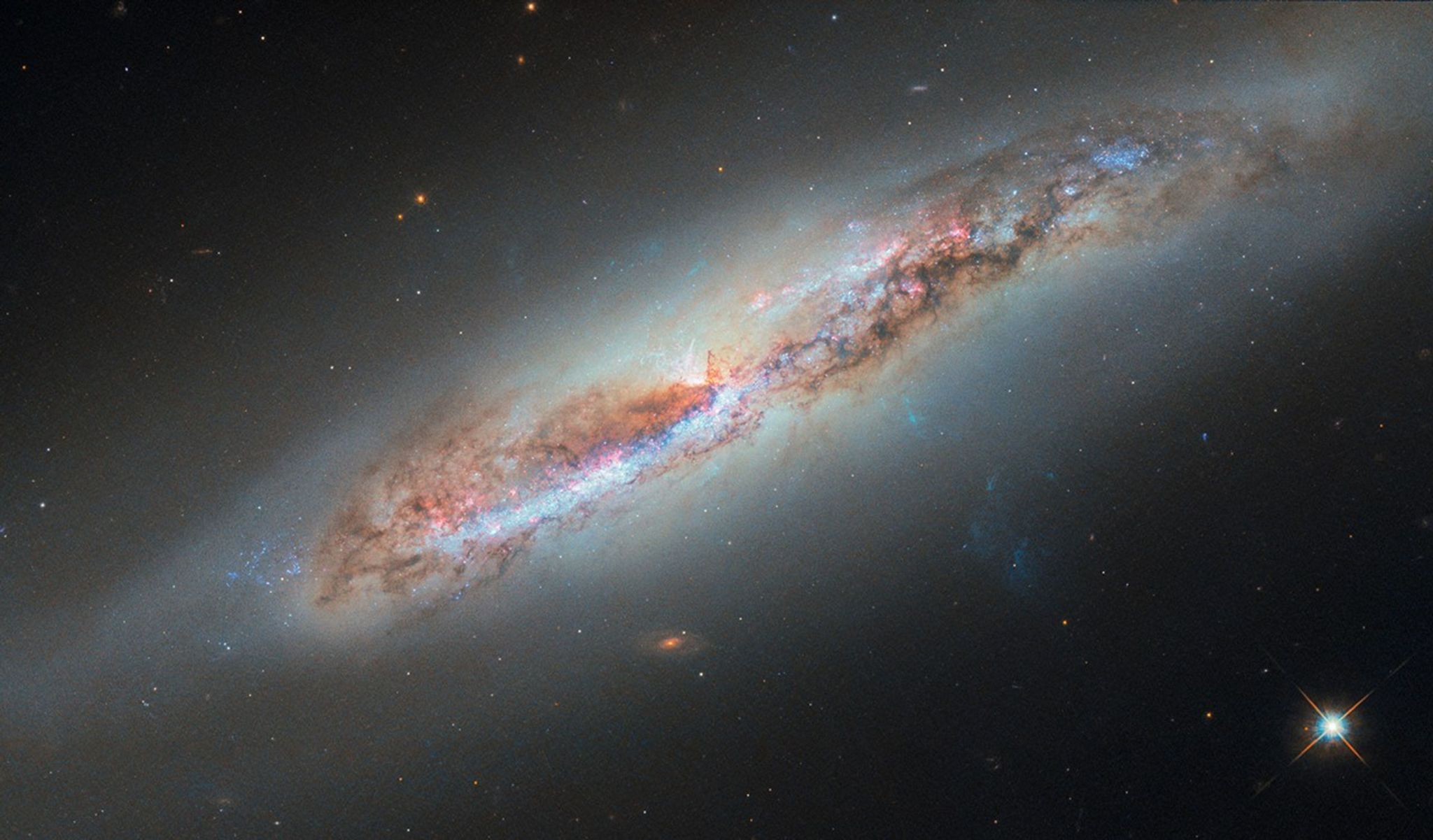Rosetta has imaged the smallest grains of Comet 67P/Churyumov-Gerasimenko’s dust yet, with its Micro-Imaging Dust Analysis System, MIDAS.
Atomic force microscope topographic images of MIDAS particles A, B, and C. (a) Overview image with a pixel resolution of 312 nm and a colour scale representing height. (b) Sub-units (grains) of the individual particles detected at the resolution of the instrument are outlined. (c) 3D images of particles A and C with two times height exaggeration to aid visualisation. Particles A and C comprise tightly packed ‘compact’ grains, while B appears to be a single grain.
MIDAS works by collecting and then physically scanning grains with an Atomic Force Microscope. This uses a very fine tip, a bit like an old-fashioned record player needle, that is scanned over a particle. The deflection of the needle and therefore the height of the sample are measured to build up a 3D picture. This enables scientists to determine the structure of the particle, and thus gain insight into how it might have formed.
The new results, published in the journal Nature, provide evidence that dust particles continue to be aggregates below the size range already reported by the COSIMA instrument. That is, even at the very small scales of a few tens of micrometres down to a few hundred nanometres, the dust grains analysed by MIDAS appear to be made up of numerous smaller grains.
“To understand how comets are formed, we need to understand the structure of the smallest grains and how they are built,” says Mark Bentley of the Space Research Institute at the Austrian Academy of Science in Graz, Austria, principal investigator of MIDAS and lead author of the paper. “What we see with MIDAS is that everything is made of smaller and smaller aggregates; it’s similar to what the COSIMA instrument sees but continued down to even smaller scales.”
Atomic force microscope topographic images of MIDAS compact particle D. (a) Overview image with a pixel resolution of 80 nm and a colour scale representing height. (b) Sub-units (grains) of the particle detected at the resolution of the instrument are outlined. (c) 3D image of the particle with two times height exaggeration to aid visualisation.
MIDAS detected both small, tightly packed ‘compact’ grains and larger more porous, loosely arranged ‘fluffy’ grains. The comet grains also appear to be elongated, several times longer in one direction than the others, in agreement with observations of dust in the interstellar medium.
Atomic force microscope topographic images of MIDAS particle E, a loosely packed ‘fluffy’ aggregate comprising many grains. (a) Overview image with a pixel resolution of 210 nm and a colour scale representing height. b) Sub-units (grains) of the particle detected at the resolution of the instrument are outlined. (c) 3D image of the particle corresponding to the area covered by the red outline in (a) with two times height exaggeration to aid visualisation.
Examples of the different types, which were collected by MIDAS from mid-November 2014 to February 2015, are shown in the figures accompanying this post.
One particularly large, porous grain captured from Comet 67P/C-G has similar properties to a type of so-called ‘interplanetary dust grain’ (IDP) thought to have grown into porous aggregates of smaller spheroidal particles during the early phases of Solar System formation.
These new results from MIDAS further strengthen the link between IDPs and cometary dust. The observed “aggregate of aggregates” structure of the particles gives hints to their formation mechanism, and how such particles could form a weakly bound layer at the surface of the comet nucleus.
“Aggregate dust particles at comet 67P/Churyumov-Gerasimenko” by M.S. Bentley et al is published in Nature.
See our 2014 blog post "Introducing MIDAS" for background on the instrument.
All images, credit: ESA/Rosetta/IWF for the MIDAS team IWF/ESA/LATMOS/Universiteit Leiden/Universität Wien
from Rosetta – ESA's comet chaser http://ift.tt/2bHhgnW
via IFTTT

